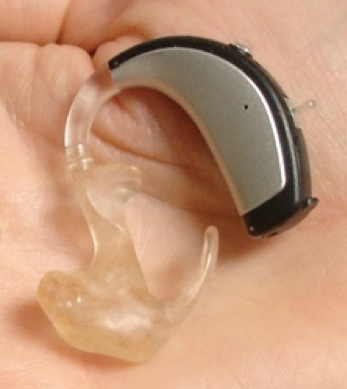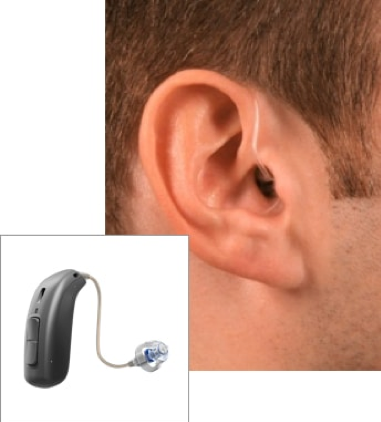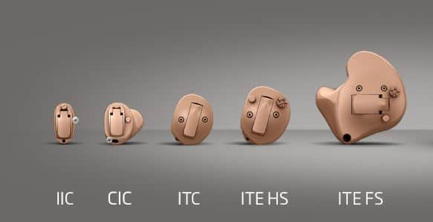At HEAR Center
When a hearing loss has been diagnosed, either at HEAR Center or in another office, you can set up a complimentary in person or via Telehealth (Zoom Health) hearing aid consultation. The audiologist will make suggestions based on your hearing loss and specific hearing needs. You will be encouraged to ask questions so you get all the information that is necessary to be comfortable with your decision. Because HEAR Center is a nonprofit organization, we strive to help the community by providing affordable hearing aids and we never pressure anyone to make a purchase. Our goal is to properly educate all patients on their options so they have all the information they need to make an informed decision.
HEAR Center is proud to work with several of the industry’s largest manufacturers. We work with the latest technology, including connectivity and rechargeable batteries. Audiologists are able to program hearing aids for infants, children, and adults with hearing loss, to give the best access to speech and facilitate speech and language development. Contact HEAR Center for specific information regarding manufacturers.
Included in the purchase of the hearing aids is a warranty for services to maintain the hearing aids at no additional cost during warranty period. At the time of the hearing aid fitting, you will also get a California state mandated 45 day trial period. During this time you will have check-ins with your audiologist to make any programming changes that are needed. The audiologist will also make sure the hearing aid is appropriately fit through REAL ear measurements. If at the end of the trial period you decide you are not satisfied with the hearing aids, you are able to return them for a full refund.
Types of Hearing Aids:

Behind-the-ear (BTE):
Behind the ear (BTE) hearing aids are the most traditional style of hearing aid and can be used for patients with any level of hearing loss. It is often recommended for young children and those with more significant hearing losses because of its flexibility and durability. The electronics of the hearing aid is housed in a plastic case that sits behind the ear. The sound is amplified and then transmitted through a plastic tube to an ear mold in the patient’s ear.

Receiver-in-the-canal (RIC):
A Receiver in the Canal (RIC) hearing aid is typically recommended for adults and older children with mild to severe hearing loss. RIC hearing aids are smaller than BTE hearing aids and are very discrete. They look similar to a BTE hearing aid, except the speaker is located in the ear canal and is connected to the rest of the hearing aid with a thin wire.

Custom Hearing Aids:
Custom hearing aids have all of the components built into a plastic case that fits into the ear. It is usually used by older children and adults who have mild to severe hearing loss. It requires an ear impression to be taken at the office as the size and shape of the aid is unique to each individual.
Accessories:
Hearing aid accessories may be recommended for those who are still having difficulty understanding speech in noise or those looking for additional connectivity and streaming options.
Wireless Streamer:
A wireless streamer allows hearing aids to stream audio directly from a phone, tablet, or computer for hands free listening of audio and phone calls. Some hearing aids have built-in Bluetooth for smartphones so a streamer is not always necessary. Based on your connectivity needs, your audiologist will advise if this accessory is needed.
TV Streamer:
A TV streamer can be connected to almost any television with HDMI or RCA capabilities to allow the audio from the TV to be directly streamed into hearing aids.
Remote Microphone:
A remote microphone can be used to stream a single person’s voice directly into your hearing aids. This can be good to use in situations where there is a lot of noise, such as in a restaurant, in a car or in meetings.
